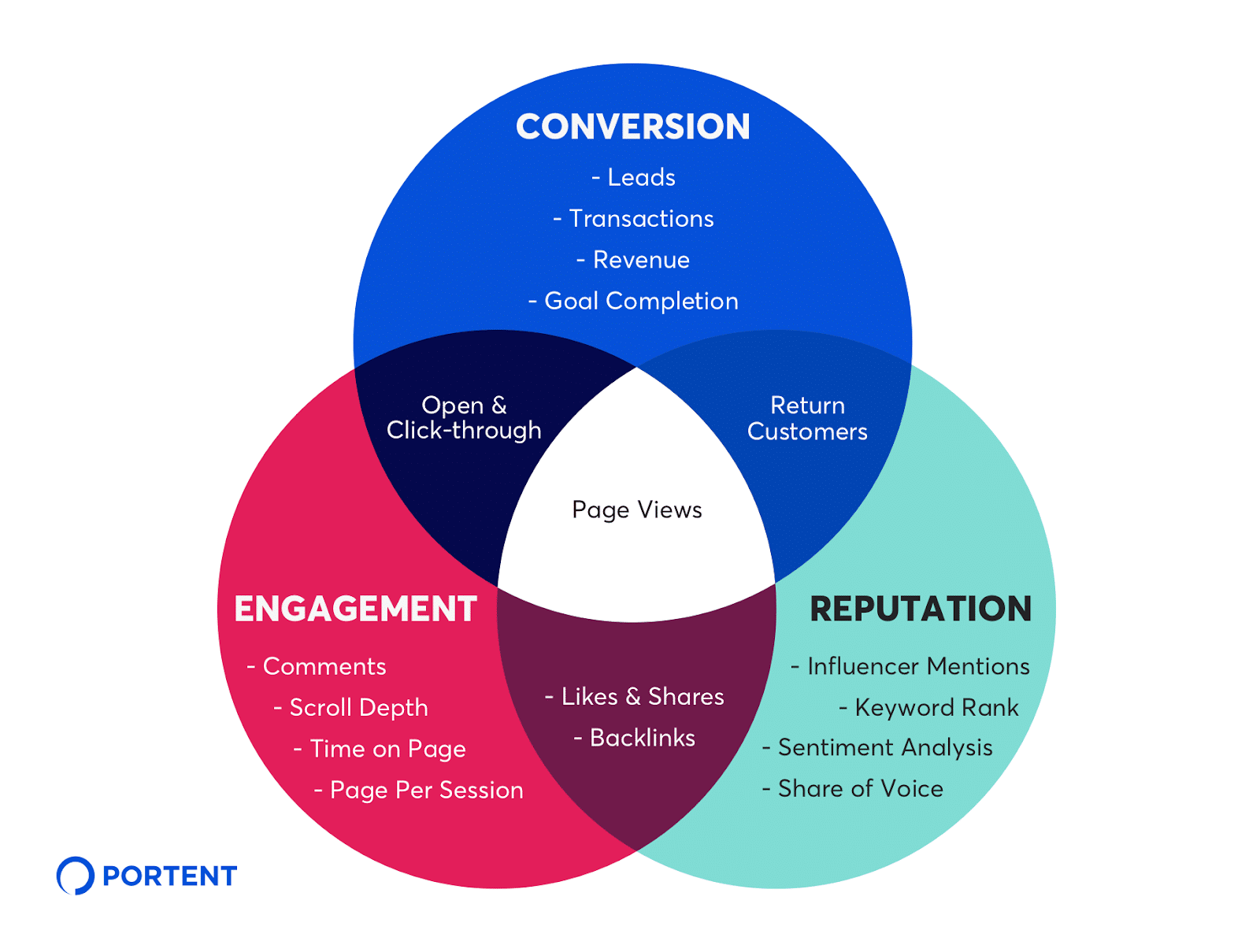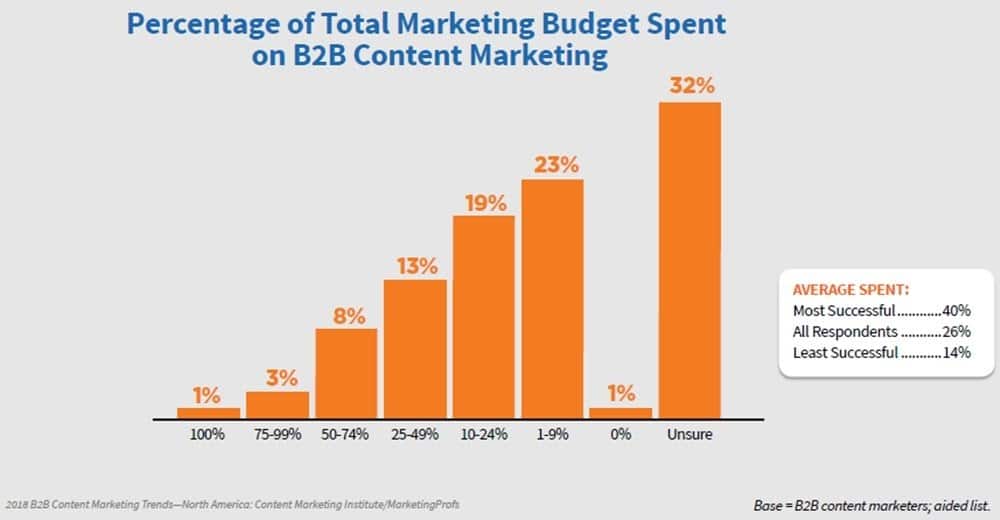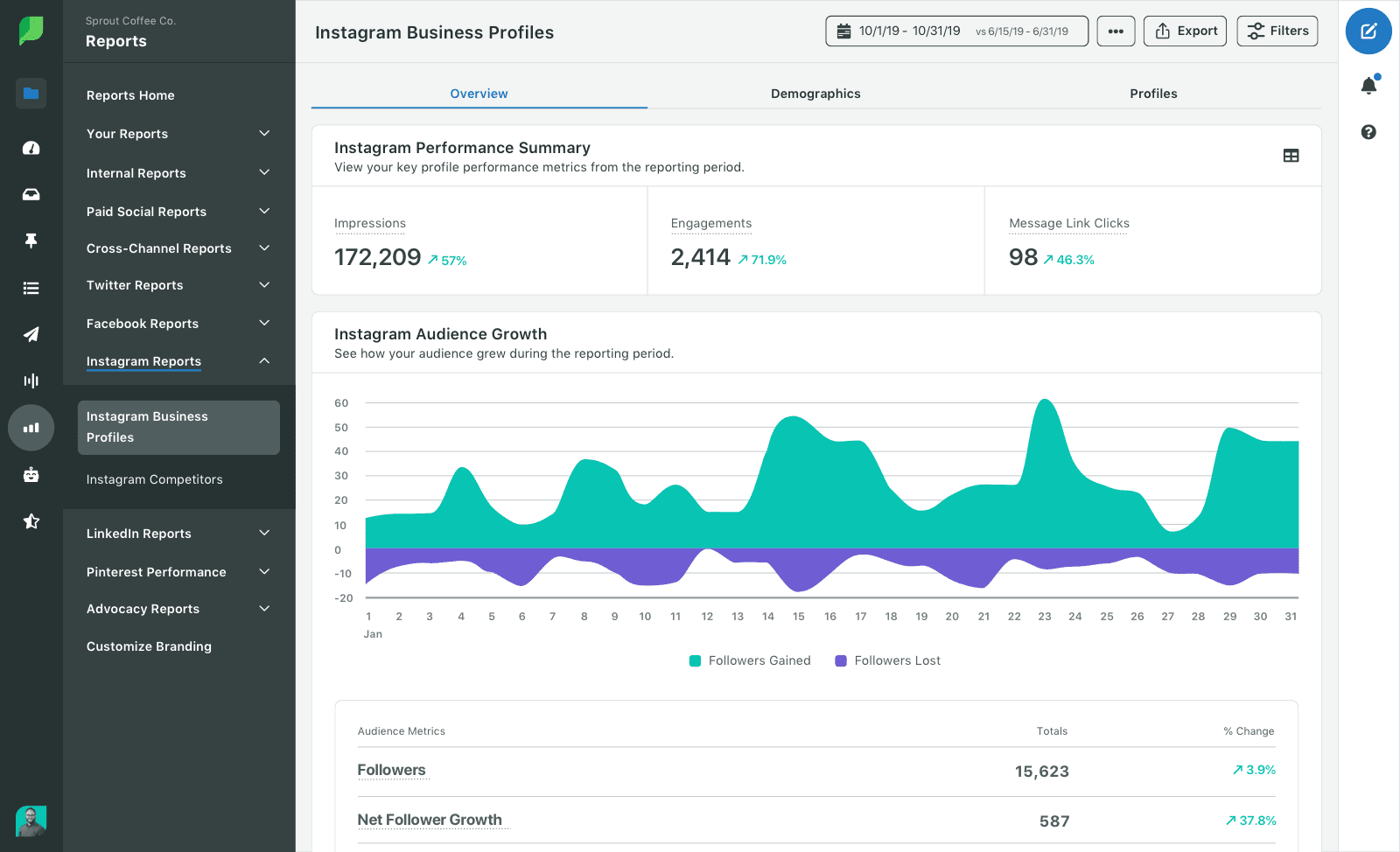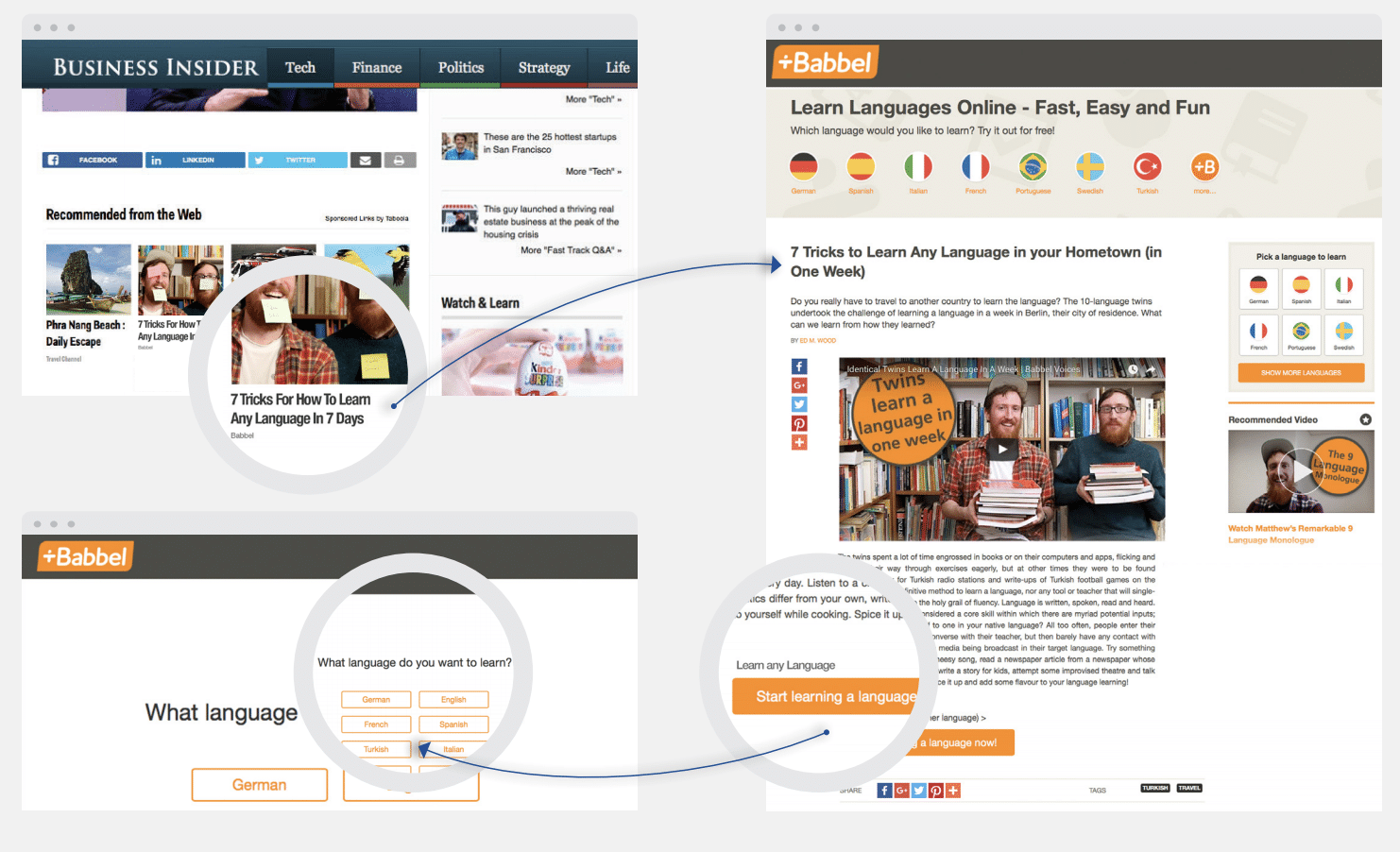When done right, a content marketing campaign can open a lot of doors for your overall marketing goals and KPIs. You can drive leads, raise awareness, even make sales—but before you go live and start seeing success, you have to build your assets and strategize.
Putting it all together can be a really great creative process, and gives you a chance to think about defining your audience, what they might want to see from you, and how you can make that content work to ladder up to business objectives.
Is it easy to create a stellar campaign? Not quite.
But is it possible with a strong baseline understanding of what makes a great campaign so great? You bet, and that’s what you’ll walk away with today.
What is a Content Marketing Campaign?
A content marketing campaign is the process of creating and distributing a piece of content, or multiple pieces of content, geared towards a specific key performance indicator (KPI) at a specific stage of the marketing funnel.
The benefits of a content marketing campaign to a business lie in the same benefits of content marketing as a whole. Embarking on the creation of a content marketing campaign can lead to:
- A strong, loyal customer base for your business
- The positioning of your brand as trustworthy and credible
- An engaged subscriber base to whom it’s easy to sell to
- Upper funnel leads for your sales funnel
- A touchpoint for customers all throughout their lifecycle with your business to keep them coming back for more
- And many, many more

(Source: Didadee)
How Do I Create a Content Marketing Campaign?
You understand how content marketing can benefit your business, and now you want to know how to create an effective content marketing campaign. Let’s break it down into steps.
1. Set Clear KPIs
This step is incredibly crucial because it lays the entire foundation for your campaign. What is the primary goal? How about the secondary? How does it ladder up to broader business goals for the quarter or year?
Establishing clear content marketing KPIs will be key when it comes time to measure success later on, and will ensure that all efforts remain focused and in the direction you (and your business!) want to be going on.
This illustration from Portent visualizes how you can think of content marketing KPIs before kicking off your campaign—centered around page views.

(Source: Portent)
2. Define Your Audience & Determine Their Needs
At the heart of content marketing best practices is the act of creating content specifically to cater to your audience’s needs or pain points.
Create audience personas to better understand who you’re speaking to, or come up with a list of common pain points you hear from customers. Perhaps you’ve created an ambassador tracking platform, and have heard that often clients struggle with how to identify potential ambassadors. You might, as a result, create an infographic of how to qualify a customer to become a brand ambassador, or the top channels where brand ambassadors may already be active.
This exercise is a great way to put yourself in your audience’s shoes and ensure that what you’re creating doesn’t just serve you, but it serves them too, and serves potential customers who may be experiencing these same pain points.
3. Carve Out Your Space
When you’re creating a content marketing campaign, you’ll want to take a look at what’s out there in your industry and see how you can set yourself and your content, apart.
Not seeing a lot of podcasts related to what you do? Maybe that’s your niche.
Been thinking about how you never see senior executives in your field do Instagram live Q&As? Maybe that’s what you try.
The point is, you’re going to be putting in a lot of effort to launch your content marketing campaign. Make sure you’re doing something that will have an impact and get you noticed by consumers.
4. Create Content Thoughtfully
This one is obvious, but it’s huge and a little more nuanced than it seems.
A lot of times, content marketing is undervalued within an organization.

(Source: Brandpoint)
As it stands, the majority of B2B businesses are not devoting the lion’s share of their budget to content marketing—and if they are, they’re not really sure what counts as content marketing to begin with.
And, don’t get me wrong, you don’t have to devote the lion’s share of your marketing budget to your campaign to be successful, but you do have to recognize that content creation requires resources.
If content marketing is new to your marketing team’s strategy, you’ve likely heard that it’s seen as a “nice to have” or that there just “isn’t really budget for social media,” as en example.
The quickest way to veer off from successful content marketing is to do it half-heartedly. Don’t mistakenly think that just anyone within your organization can whip up a social media campaign, or that whoever has the time to do so can write an engaging email.
When you’re creating content, be sure that it’s created by those who are qualified to do it. Content marketing efforts created haphazardly are—I promise—transparent in their lack of investment.
Dedicate the appropriate resources to your content marketing campaign as to not cannibalize your efforts and wind up missing out.
5. Assess, Assess, Assess
An essential part of the campaign process that cannot be ignored is the measurement of success.
This is critical for a couple of reasons. The first is that you’ll want to get a sense of the ROI of your campaign, and check in that you did, in fact, ladder up to the goals that you set. You’ll also want to discern key learnings for next time.
Maybe your campaign had unexpected outcomes. You were aiming for leads, but you ended up getting so many new Instagram followers. Do you write this off as a failure because you didn’t reach your goal? That depends.
On one hand, maybe you need to be a little clearer the next time about the CTA to fill out your form. But, on the other hand, maybe there’s something to this follower count that you can leverage in the future to then collect leads from people who enjoy your social media content.
All of this to say—doing a deep dive into the impact your campaign had can help you make a case for content marketing, understand your audience even further, and get better and better as you go.
Let’s get into how exactly you can measure success next.
How to Measure Your Campaign’s Success
You want all of those aforementioned benefits of measuring, so how do you do it?
Getting a clear look into your content marketing’s ROI depends on your specific needs.
If you’re looking to measure sales…
Google Analytics can be your very best friend. If you’re hooked up with a customer relationship management (CRM) platform like Salesforce or Mailchimp, you’ll be able to connect to Google Analytics for a seamless glance at how efforts are leading directly to revenue.
But, even without a CRM tool, Google Analytics can still help bridge the gap.
Setting up conversion goals (in this case, purchases) can help you directly track sales that stems from a specific URL.
If you’re targeting leads generated…
Similar to measuring sales or revenue, measuring leads generated lends itself to Google Analytics and a CRM tool.
Setting up a conversion goal for the moment that someone signals to you that they’re interested in you (effectively becoming a potential customer) is key to determine if your content marketing efforts are, in fact, leading to leads.
If you’re targeting site traffic…
I’d like to start this part with a special mention of content optimization is not feasible if nobody is finding your content, but this is certainly true for site traffic.
Measuring your site traffic is a pretty great indicator of how you should be optimizing your content, and—you guessed it—Google Analytics is a pretty great tool here, too.
Navigating to Behavior > Site Content > All Pages gets you right to a traffic breakdown over time, as well as by URL, so you can clearly see where your traffic is coming from and attribute it to your content marketing efforts.
If you’re targeting on-site engagement…
Want to know if consumers engaged with your content? There are several ways to come at this.
You can look at bounce rate, page views, time on page, and more to get a well-rounded sense of how the people you drove to your site actually engaged once they got there.
The Audience Overview tab of Google Analytics is a fantastic place to see this information.
You can break these metrics down by traffic source by navigating to Behavior > Site Content > All Sources, and filtering by Source/Medium.

(Source: Taboola)
If you’re targeting social media engagement…
There are a few ways you could break this down. Perhaps you’re interested in straightforward engagement rate, the total interactions on a post divided by follower count and multiplied by 100. Or, maybe you’re interested in how many new followers resulted from a specific campaign.
These metrics are relatively simple to track right within social platform themselves, but they’re greatly added by social media management platforms like Sprout Social, Hootsuite, or Buffer.
These platforms give countless ways to view data, including overviews like this one:

(Source: Sprout Social)
You can then, of course, get even more granular and look into how each post performed to round out the scope of understanding around your social media engagement.
If you’re targeting brand awareness or brand authority…
You want people to know who your company is and/or to know that you’re an authority in your industry.
This is the toughest KPI of all to metric (no quick Google Analytics trick for this one), but taking a look at things like PR coverage or a sentiment analysis can be really helpful. These can be done manually, but tools like Cision for PR or Sprout Social for social media have these capabilities built in and can make the process much smoother.
Great Content Marketing Campaign Examples and Case Studies
I could go on and on all day about what goes into creating the best content marketing campaigns, but what may be most helpful of all is taking a look at some content marketing campaign examples.
Babbel
Online language learning leader Babbel prides themselves on having a very rich content strategy with a robust online magazine that covers languages and language learning in a fun, approachable way.
Content is an important acquisition tool for Babbel, driving over 100,000 leads per month.

Amplifying their content with Taboola led to a 22% increase in new content marketing leads indicating how content marketing can be optimized using Taboola Campaign Data.
Billie
Razor disrupter Billie has a lot of great examples under their belt of standout content marketing campaigns on social, but one in particular is their Project Body Hair campaign that they launched across YouTube, Instagram, and Facebook.
Making use of their various channels in a cohesive way allowed them to reach a wide audience to directly address a pain point they saw come up over and over again––how much more women pay for everyday products than men.
With this campaign, Billie not only amplified their message, but they quickly established themself as an industry thought leader and built a community ready to rally around Billie and what they stand for.
Urban Outfitters
In a creative take on a timely back-to-school email campaign, retailer Urban Outfitters featured real college students sharing which Urban Outfitters products they got to fit their living space aesthetic.

Nothing says speaking to your audience quite like literally featuring them, doing a one-two-punch of building credibility with testimonials and featuring specific products, making it quite easy to click and purchase if your aesthetic, say, matches Kara’s.
Blinkist
Blinkist had their sights set on scaling acquisition efforts and positioning themselves as a personal development thought leader, but they hadn’t yet delved too far into content marketing until they started working with Taboola to amplify their digital magazine content.

Blinkist was able to get their thought leadership content in front of the right audience, drive qualified traffic, and ultimately see 60,000+ sign ups over the course of six months.
You’re Ready to Tackle a Content Marketing Campaign
Creating a successful content marketing campaign may not be effortless, but with the right knowledge and tools under your belt, you’re prepared to rise to the occasion.
Key takeaways:
- It starts with establishing clear KPIs and knowing exactly who you’re speaking to
- It then comes time to determine which type of content makes the most sense for you to create
- You then have to devote the right resources to creating as outstanding of a campaign as you possibly can
- Then, lastly, you have to measure the appropriate KPIs using the tools you have at your disposal so you can rinse and repeat
Take a Tip
Your content marketing efforts don’t have to exist in a bubble. Get even more out of the work you’re doing by amplifying your content with a platform like Taboola. Reaching more—and better—consumers is the gateway to every content marketing KPI, and a content discovery platform like Taboola is a great way to do exactly that.
Happy content marketing!